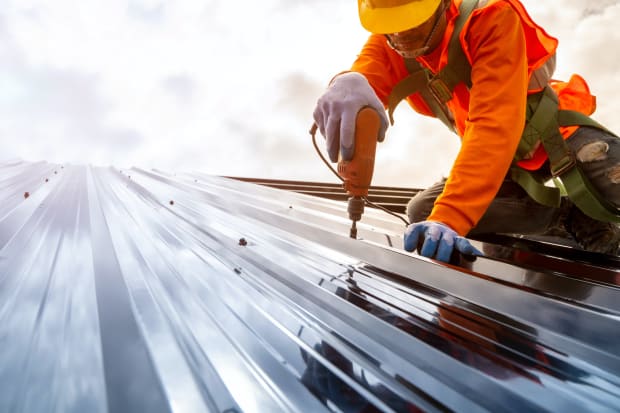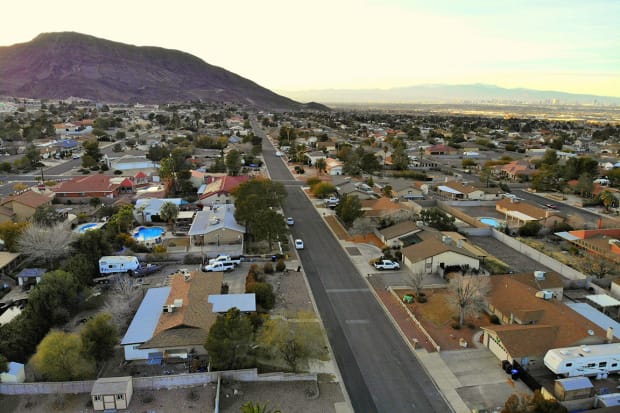With home prices rising fast and people spending hours refreshing Zillow (ZG) only to find that no new and worthwhile listings are appearing, buying a small plot of land and getting down to work can feel like the only way forward to homeownership.
This sentiment is certainly shared by both developers and individuals across the country.
Data from the country found that housing starts rose 4% annually to a seasonally adjusted annual rate of 1.793 million units while building
Building permits also rose to 1.87 million and construction is advancing at the fastest rate since 2006.
With just 950,000 homes for sale across the country at the end of March, inventory dropped 9.5% from last year and is some of the lowest seen in decades.
In turn, most single-family property that does hit the market is often met with a number of interested buyers who are forced to compete by making higher and higher offers or even paying in cash.
Houses that fall below a given city or area's price median are particularly prone to this type of inflation.
Can Construction Fix Such A Severe Shortage?
One Realtor.com estimate puts the American shortage of homes at 5.24 million.
But even as construction has accelerated in recent years with 1.7 million new house starts in 2021, it will still take years to make a dent in inventory amid high demand and a growing population.

"It's not something that's going to get fixed overnight even with the best of intentions," Greg McBride, the Chief Financial Analyst of Bankrate.com told TheStreet in a phone call.
"We can't just wave a magic wand and build the number of houses that that need to be built to make up for more than a decade of under building."
While building a home independently can offer some who need homes to move away from bidding wars, it is also far from a cheap endeavor.
Amid both regular inflation and pandemic-related shortages of even the most basic materials, the U.S. Census Bureau found that construction costs rose by 17.5% between 2020 and 2021.
Amid wildfires and tariffs on Canadian lumber, the cost of softwood lumber alone spiked 85% in the last three months.
This type of stark increase will trickle down to the final cost, whether one plans to take on a construction project or buy a newly-built house from a developer.
Smaller (And More Affordable) Houses Are Often Expensive To Build
With supplies growing more expensive, it can often be more economical for developers to build larger homes than smaller ones.
With the average home price hitting a record $375,300 in March, affordability will not improve if only million-dollar spec homes are being built by developers.
"Costs have gone up everything from land to supplies and labor and that pushes the price tag higher," McBride said.
"The profit margin is going to be bigger on a larger home than on a smaller home," he said. "While building more will help, we're not going to solve the problem if we're not seeing enough homes built in the price ranges that first-time homebuyers can afford."

Khairil Azhar Junos / Shutterstock
Many experts are predicting an upcoming housing bubble that, while far from what happened in the lead-up to 2008, will cause growth to slow, as many hold off on buying entirely.
But even if home prices fall by the predicted 10% to 15% in the coming year, the drop will not even make up for what happened in the last few years.
In Phoenix, the price of a home rose by nearly 33% between January 2021 and 2022.
While the dearth of available inventory is one factor causing increases, inflation that does not keep up with salaries is no less important.
I Need A House Now. What Do I Do?
"While supply helps alleviate the affordability component, it doesn't alleviate it in the short term," Eric Maribojoc, the executive director at George Mason University's Center for Real Estate Entrepreneurship, told TheStreet.
"If a lot of the new supply is priced beyond the reach of the average person that's trying to buy a house, the problem lingers even though there's more supply in the market."
According to Maribojoc, solutions can lie in pushing for legislation that would speed up or make it easier to get building permits approved.
Department of Commerce data shows that the backlog of homes approved for construction but not being built was at a record-high of 280,000 in March.
One other possibility could lie in making use of density by encouraging developers to build smaller and more affordable housing on the same amount of land.
While forcing people into smaller spaces is not an ideal solution, lack of such advocacy can lead to entire segments of the population — including many who could have owned a home in prior generations being — priced out of the market entirely.
"A leveling-off in which economic growth lets people's incomes catch up and make housing more affordable is what we can hope for," Maribojoc said. "But there are a lot of things that can and should be done in the meantime to help moderate that price increase."







